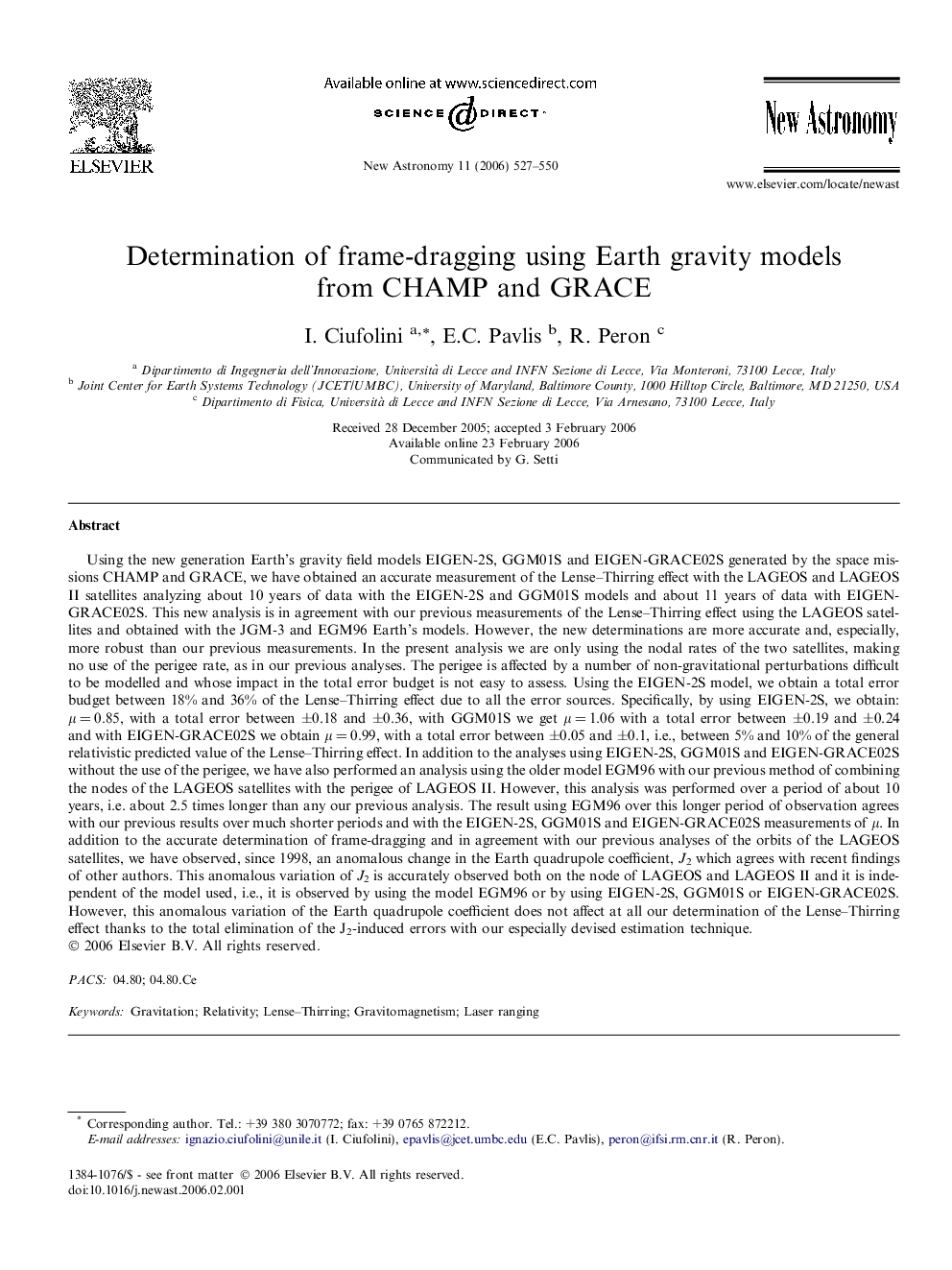| Article ID | Journal | Published Year | Pages | File Type |
|---|---|---|---|---|
| 1779790 | New Astronomy | 2006 | 24 Pages |
Abstract
Using the new generation Earth's gravity field models EIGEN-2S, GGM01S and EIGEN-GRACE02S generated by the space missions CHAMP and GRACE, we have obtained an accurate measurement of the Lense-Thirring effect with the LAGEOS and LAGEOS II satellites analyzing about 10 years of data with the EIGEN-2S and GGM01S models and about 11 years of data with EIGEN-GRACE02S. This new analysis is in agreement with our previous measurements of the Lense-Thirring effect using the LAGEOS satellites and obtained with the JGM-3 and EGM96 Earth's models. However, the new determinations are more accurate and, especially, more robust than our previous measurements. In the present analysis we are only using the nodal rates of the two satellites, making no use of the perigee rate, as in our previous analyses. The perigee is affected by a number of non-gravitational perturbations difficult to be modelled and whose impact in the total error budget is not easy to assess. Using the EIGEN-2S model, we obtain a total error budget between 18% and 36% of the Lense-Thirring effect due to all the error sources. Specifically, by using EIGEN-2S, we obtain: μ = 0.85, with a total error between ±0.18 and ±0.36, with GGM01S we get μ = 1.06 with a total error between ±0.19 and ±0.24 and with EIGEN-GRACE02S we obtain μ = 0.99, with a total error between ±0.05 and ±0.1, i.e., between 5% and 10% of the general relativistic predicted value of the Lense-Thirring effect. In addition to the analyses using EIGEN-2S, GGM01S and EIGEN-GRACE02S without the use of the perigee, we have also performed an analysis using the older model EGM96 with our previous method of combining the nodes of the LAGEOS satellites with the perigee of LAGEOS II. However, this analysis was performed over a period of about 10 years, i.e. about 2.5 times longer than any our previous analysis. The result using EGM96 over this longer period of observation agrees with our previous results over much shorter periods and with the EIGEN-2S, GGM01S and EIGEN-GRACE02S measurements of μ. In addition to the accurate determination of frame-dragging and in agreement with our previous analyses of the orbits of the LAGEOS satellites, we have observed, since 1998, an anomalous change in the Earth quadrupole coefficient, J2 which agrees with recent findings of other authors. This anomalous variation of J2 is accurately observed both on the node of LAGEOS and LAGEOS II and it is independent of the model used, i.e., it is observed by using the model EGM96 or by using EIGEN-2S, GGM01S or EIGEN-GRACE02S. However, this anomalous variation of the Earth quadrupole coefficient does not affect at all our determination of the Lense-Thirring effect thanks to the total elimination of the J2-induced errors with our especially devised estimation technique.
Related Topics
Physical Sciences and Engineering
Physics and Astronomy
Astronomy and Astrophysics
Authors
I. Ciufolini, E.C. Pavlis, R. Peron,
